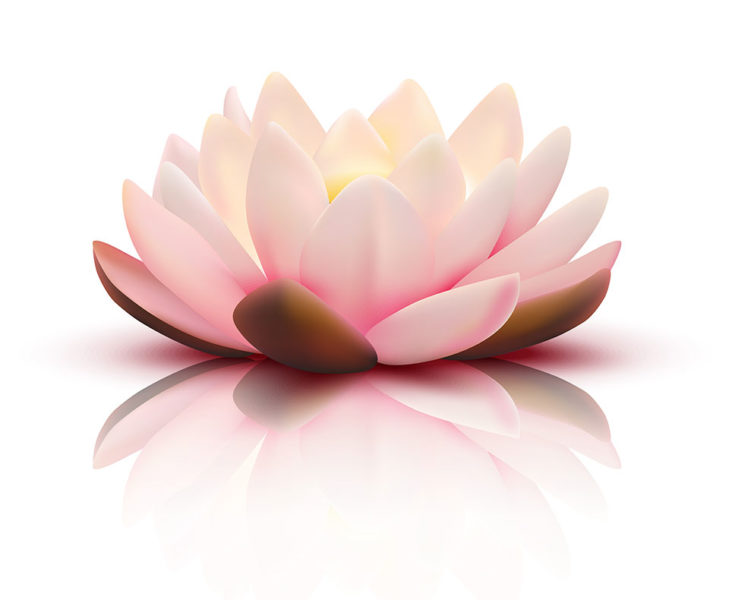The word Ayurveda comes from the two Sanskrit words Ayur meaning life and Veda meaning science.
The RIGVEDA (5000 BC) and the ATHARVAVEDA (1000 BC) are the first medical treaties of India but it was CHARAK around 700/600 BC that codified Ayurveda with the CHARAKA SAMHITA. Mankind had always wished to protect himself against physical, mental and spiritual misery. This is why the history of medicine is as old as man.
According to Indian tradition the first four objectives of human life are:
DHARMA: to accomplish your destiny
ARTHA: to acquire wealth
KAMA: to satisfy your desires
MOKSHA: to be liberated
It is believed that in order to be in good health these four objectives need to be achieved.
The definition of the science of life recommends that we live a happy life, which implies an individual attitude that is useful to society. In fact, Ayurveda is a social medicine and its particularity is to heal the person and not the illness.
AYURVEDA is divided into 8 branches
KAYACHIKITSA, Internal medicine SHALYA TANTRA
SHALYA TANTRA, Surgery
SHALAKYA TANTRA, Otolaryngology (ENT) medicine
AGADATANTRA, Toxicology
BHUTA VIDYA, Psychiatry (treatment of illness caused by evil spirits and mental illnesses)
KAUMARBHRITYA TANTRA, Pediatric medicine
RASAYAN, Geriatrics and therapies for longevity
VAJIKARAN, Science of aphrodisiacs
The human body is dependant on cosmic energy “Prana” which is linked to the world by five senses and five subtle senses. In order to understand this science we need to understand the Hindu cosmology, where a tight connection exists between the microcosm (men) and the macrocosm (the universe).
There are:
5 JNANINDRIYA, the knowledge organs, the 5 senses: hearing, touch, sight, taste and smell
5 KARMINDRIYA, the action organs: the mouth, intestines, hands, feet and genitals
5 TANMATRA, the essence of the coarse elements: sound, touch, shape, taste and smell.
5 PANCHAMAHABHUTA, the coarse elements: ether or space, air, fire, water and earth.
The KARMINDRIYA and the JNANINDRIYA are the faculty of the senses and the perception of the human body. They take place and are perceived thanks to the intervention and by the intermediary of the TANMATRA and PANCHAMAHABHUTA. For the Hindu, there are not four but five elements, the most important one being space.
PRANA is the life essence of life but also the BRAHMAN or universal energy, KUNDALINI SHAKTI. In its ordinary sense PRANA also means the ground, the base of the 10 INDRIYA (KARMINDRIYA and JNANINDRYIA). Indeed those cannot function without the circulation of Prana in the body.
PRANA acts at the level of the lungs from the respiratory function. It manifests itself through life and breath. This ordinary PRANA is called VAYU, it is divided into 5 vata or vital currents which are:
PRANA VAYU, which function is breathing and is located at the level of the thorax.
APANA VAYU which function is evacuation by the nostrils and by excrements is localized at the level of the anus.
UDANA VAYU which function is to disconnect the ego during sleep and to reconnect with it during waking up and is located at the level of the throat.
SAMANA VAYU gives the tactile sensation and is localized all over the body.
VYANA VAYU or peripheral vata function is the circulation of every limb.
The 5 vital breaths, the vayus or ordinary pranas
PRANA VAYU : ascendant breath, is produced by the movement of inhaling and exhaling. It is located in the thorax and in the heart. Its color is emerald.
APANA VAYU : abdominal breath. It drives excrements down. It is located in the anus. Its color is red.
UDANA VAYU : upward movement. It is the more subtle breath, by chaneling it, it’s possible to surpass the limit of time and space. By doing so we awaken the universal PRANA or KUNDALINI. It is located in the throat and its color is made of fire sparkles.
SAMANA VAYU : balancing breath. It is distributed by the moods throughout the body. It is necessary to the digestion process. It is located within the body.
VYANA VAYU : is the breath that goes with the sensation of touching the body. It helps in dissolving differences. It is located in all over the body. Its color is white/purple like the datura flower.
Disease or weakness are principally an imbalance of the 5 VAYUS, the ayurvedic practitioner will look at which VAYU has been disturbed.


